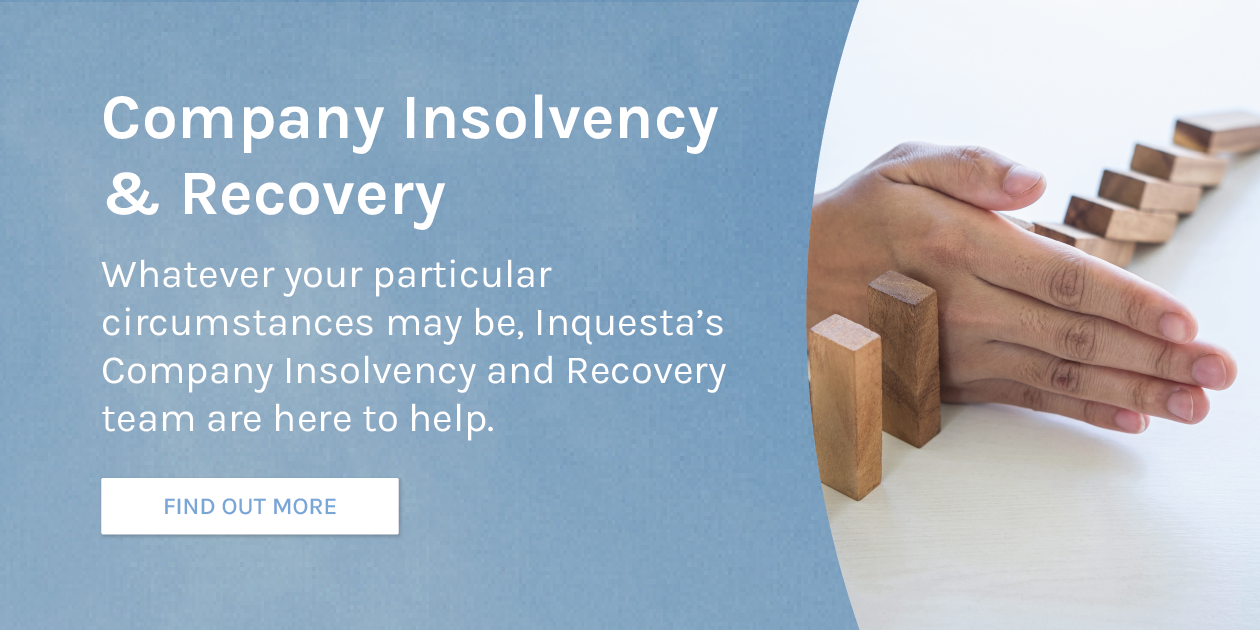Administration Staff and Their Rights: Do You Get Paid or Obtain Redundancy When a Company Goes Into Administration?
Administration Staff and Their Rights: Do You Get Paid or Obtain Redundancy When a Company Goes Into Administration?
Blog Article
Business Insolvency Company
7 Preswich Avenue, Leigh, WN7 1RZ
0333 567 1686
Recognizing the Repercussions of Company Liquidation on Staff Member Retention and Conveniences

Influence On Work Safety
In the occasion of business liquidation, the impact on job security can be significant for workers as unpredictability pertaining to future employment emerges. When a firm enters into liquidation, workers encounter the challenging prospect of prospective work loss. This unpredictability can lead to enhanced stress and anxiety amongst the labor force, influencing their spirits and performance.
During the liquidation process, workers might experience a variety of feelings, consisting of concern, aggravation, and rage, as they grapple with the opportunity of unemployment. The lack of quality bordering the timeline of the liquidation and the destiny of their settings can create a feeling of instability within the labor force.
Moreover, employees may also be concerned concerning the standing of their advantages, such as health care protection, retirement strategies, and paid time off, throughout and after the liquidation process. The possible loss of these advantages adds an additional layer of complexity to a currently tough circumstance for employees.
Adjustments in Employee Advantages

One typical modification is the reduction or elimination of certain benefits to reduce costs and clear up arrearages. As an example, company payments to retirement strategies may discontinue, leaving employees to bear the full obligation of saving for their future. In addition, medical care advantages might be scaled back, causing greater out-of-pocket costs for clinical solutions.
Interaction ends up being vital during this duration of shift. Employers have to be transparent regarding the important link changes, offering clear explanations and explanation help to help employees navigate with the modifications. Open up dialogue and support can assist reduce anxiety and uncertainty among the labor force, cultivating a more positive transition experience in spite of the challenging scenarios.
Retention Approaches Post-Liquidation
Adhering to the business liquidation, executing effective retention methods is critical to protecting organizational skill and preserving security within the labor force. In times of unpredictability, workers might feel distressed concerning their future job protection and be extra likely to look for alternative employment possibility. To reduce this threat, business ought to concentrate on open interaction, providing transparency concerning the business's circumstance, and offering support to workers throughout the transition period.
One trick retention method post-liquidation is to focus on staff member well-being and spirits. Additionally, using occupation advancement opportunities and upskilling programs can boost worker inspiration and engagement throughout tough times.
Furthermore, developing a clear job progression path and setting sensible objectives can provide workers a sense of instructions and objective within the firm (do employees get paid when company goes into liquidation). By investing in staff member advancement and proactively involving them in decision-making procedures, companies can boost employee retention prices and build a resistant labor force post-liquidation
Legal Civil Liberty and Securities
Throughout the results of business liquidation, it is crucial to deal with the lawful civil liberties and defenses offered to staff members to guarantee a compliant and fair procedure. It is important for employees to comprehend these legal rights and seek legal suggestions if needed to navigate the complexities of the liquidation procedure.
Additionally, in instances where a company goes right into liquidation, employees are typically thought about preferential creditors, granting them greater top priority in receiving outstanding payments over various other financial institutions. Understanding these legal rights and securities is basic for staff members to protect their passions and look for appropriate recourse in the event of firm liquidation - do employees get paid when company goes into liquidation.
Dealing With Financial Uncertainty
Browsing financial unpredictability can be an overwhelming challenge for workers influenced by business liquidation. During such times, it is vital for staff members to examine their existing economic circumstance realistically.
Seeking economic therapy or advice from specialists can use valuable understandings into managing financial obligations, restructuring economic commitments, and planning for the future. It is crucial for staff members to stay informed regarding their privileges, such as severance bundles or outstanding settlements, to guarantee they view it now get what they are owed. Thinking about alternate employment options or gig chances can help bridge financial voids during this transitional period. By proactively attending to monetary challenges, staff members can navigate with the uncertainty brought on by business liquidation with greater durability and readiness.
Conclusion
Finally, business liquidation can have substantial effects on worker job protection, advantages, and general well-being. It is critical for organizations to apply retention strategies and give support to staff members throughout this unsure time. Understanding lawful rights and protections can help mitigate the effect of liquidation on workers. Coping with economic uncertainty requires an aggressive method and interaction from both companies and staff members to browse through the obstacles efficiently.
When a company deals with liquidation, the fate of its staff members hangs in the equilibrium, increasing critical concerns concerning work safety and security, advantages, and lasting stability. The impact of firm liquidation on staff member retention and advantages is a complex issue that demands a more detailed assessment to recognize the full scope of its repercussions.
Browsing financial unpredictability can be a complicated difficulty for workers affected by business liquidation. By proactively resolving financial challenges, workers can browse via the uncertainty caused by business liquidation with higher resilience and readiness.

Report this page